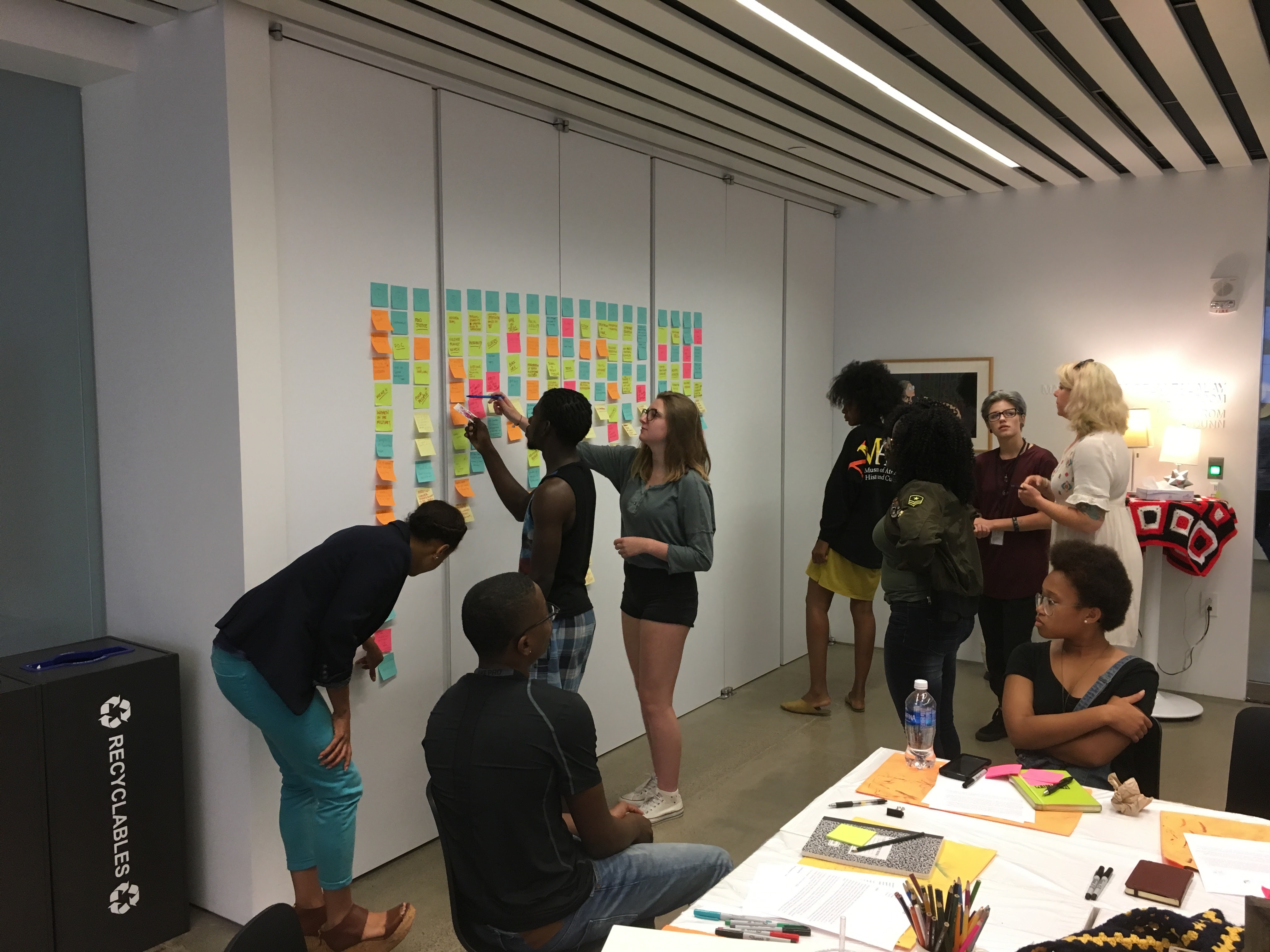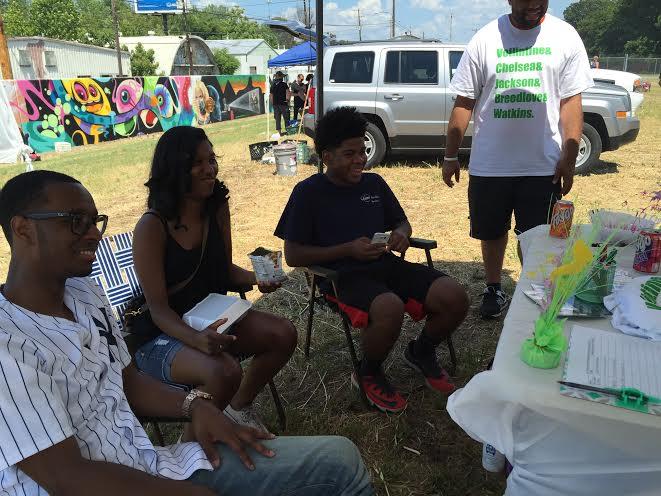What is civic engagement in a bad-news world?
Published November 20, 2018
It can feel like too much. Fake news, real news, natural disasters, mass shootings, racism, sexism, voter suppression—and let’s not forget bee colony collapse disorder.
Troubling as they are, even these big threats sometimes feel like just the tip of the iceberg. Especially when we hear assertions like, “Americans are less socially and politically engaged now than 30 years ago,” it’s easy to conclude that consumerism has become our unquestioned king, to lament that our humanity has gone up in smoke, and to yell into the wind, “For crying out loud, what is civic engagement now, anyway?!”
Friend, we feel you. But at ioby, we also have the privilege of working every day with residents all across the country who look at challenges and see opportunities. These people are aware of the problems—large and small—in our neighborhoods, schools, parks, roads, downtowns, and town halls, but they also know that they can help create solutions, right where they live. These people are walking out their front doors, linking arms with their neighbors, and saying, “Let’s do this.”
 [Cleveland’s Design as Protest convening, crowdfunded through ioby.]
[Cleveland’s Design as Protest convening, crowdfunded through ioby.]
If you’re asking yourself: What is civic engagement when some problems seem so big? What difference can I really make in the grand scheme? Then we invite you to read about three ioby projects that we think provide some answers.
But first, maybe an on-paper definition of this wonky phrase would be helpful. “What is civic engagement?” according to Civic Responsibility and Higher Education, edited by Thomas Ehrlich:
“Civic engagement means working to make a difference in the civic life of our communities and developing the combination of knowledge, skills, values and motivation to make that difference. It means promoting the quality of life in a community, through both political and non-political processes.”
Civic engagement type #1: Voting
If you cast a ballot at every opportunity, you can check this civic engagement box—congrats! But if you also feel distressed about low voter turnout or unpreparedness at the polls, you can amp up collective voting power where you live by helping others get on board.
Example:
The student-run ioby campaign Vote at 17 raised almost $1,100 to educate young people in Brooklyn about Automatic Voter Registration and the many ways people can get involved in the political process even before they’re of voting age—like organizing rallies in the state capital.
Civic engagement type #2: Protesting
Taking to the streets is a time-honored way to show elected officials, the press, and the rest of the general public what you think about an issue. But besides marches and sit-ins, there are other forms of protest that appeal to different people, can take place in different places and times, and can make use of different talents.
Example:
Clevelander Michelle Crawford’s ioby campaign Design as Protest raised $324 to convene artists, activists, designers, and other neighbors to pursue a “design intervention” that would address issues of injustice throughout the city’s built environment. According to Michelle, “This is an action, using the language of design, to protest a new administration that actively opposes civil liberties and seeks to perpetuate injustice in our world.”

Case study #3: Call your representatives
Former congressional staffer Emily Ellsworth makes the case that calling your reps is more effective than emailing them, writing them paper letters, or contacting them on social media. If your representative’s staffers know your phone number by heart, we pat you on the back. But you don’t have to make those calls alone, and you don’t have to make them just to elected officials in order to spur positive change.
Example campaign:
Michalyn Easter formed the nonprofit Our Grass Our Roots and raised over $1,700 on ioby for her campaign Friends of Chelsea Greenline Advocacy Group, which helped to give North Memphians an official voice in the development of a new neighborhood greenway. On a roll, Michelle then started a 311 phone banking group that meets monthly to make service requests to the city. They submit all their requests using one account so they can easily track their success rate—which hovers around 100%. In addition to being effective, Michelle says the group’s convenings are a lovely way to build community with her neighbors.
Of course, these projects also represent just the tip of the iceberg—but in this case, it’s the start of realistic, proactive, high-impact responses to bad news days! Thankfully, there are just as many creative solutions out there as there are wicked problems. We hope reading about a few of them has put a spring in your step and motivated you to take your civic engagement to the next level where you live.
If you already know what you want to do with your neighbors to make your community better, tell us your idea! We can help you make it happen.
Want more answers to the question, “What is civic engagement in troubling times?”
– Bowling Alone: The Collapse and Revival of American Community by Robert D. Putnam draws on nearly half a million interviews with Americans to understand how changes in our working lives, family structures, interactions with technology, and other factors have contributed to declining civic engagement—and what we can do to regain our collective strength.
– The Next City article When We’re All Urban Planners positions crowdfunding with ioby as a model for boosting citizen engagement—particularly in low-income neighborhoods—by helping residents build “reusable” networks among themselves and attracting the attention of city officials and developers.
– Good primers for any season, our blog post “More than crowdfunding—civic power!” and our Memphis Impact Report illustrate the layers of civic engagement that are built up and strengthened over the course of a community crowdfunding life cycle.

